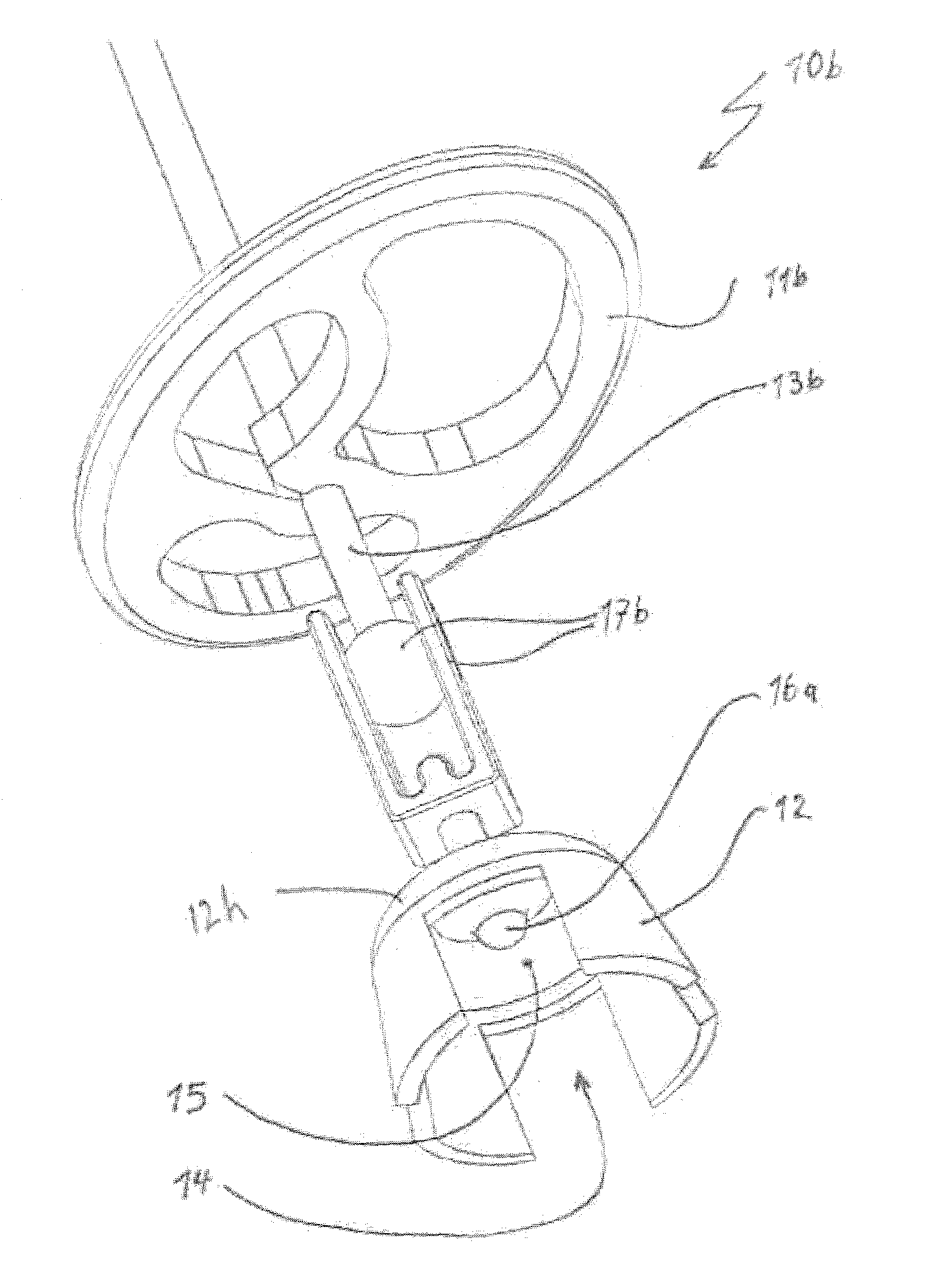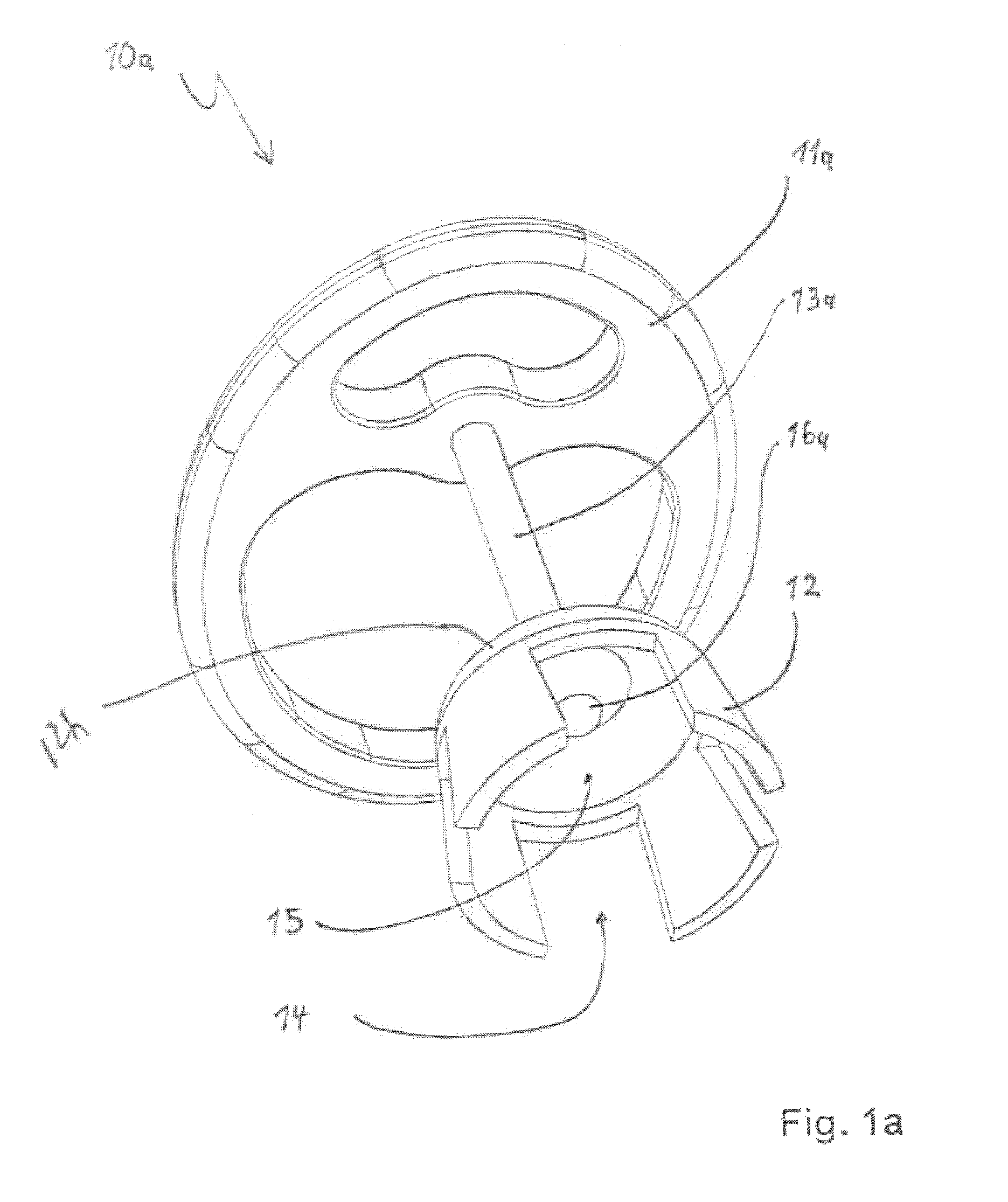Ossicle prosthesis comprising a built-up attaching element
a technology of attaching element and ossicle, which is applied in the field of active or passive ossicle prosthesis, can solve the problems of limited sound conduction between the tympanic membrane and the inner ear, conductive deafness, etc., and achieve excellent sound-conducting properties, excellent biocompatibility, and prevent damage.
- Summary
- Abstract
- Description
- Claims
- Application Information
AI Technical Summary
Benefits of technology
Problems solved by technology
Method used
Image
Examples
Embodiment Construction
[0055]The following is a detailed description of example embodiments of the Invention depicted in the accompanying drawings. The example embodiments are presented in such detail as to clearly communicate the invention and are designed to make such embodiments obvious to a person of ordinary skill in the art. However, the amount of detail offered is not intended to limit the anticipated variations of embodiments; on the contrary, the intention is to cover all modifications, equivalents, and alternatives falling within the spirit and scope of the present invention, as defined by the appended claims.
[0056]The embodiments of the ossicular prosthesis 10a; 10b; 10c; 20a; and 20b of the invention are depicted schematically in FIGS. 1a; 1b; 1c; 2a; and 2b, respectively, but which differ in terms of the detailed design thereof, each comprise, at one end, a first coupling element 11a; 11b; 11c; 21, which is used for the mechanical connection of the prostheses to a component of the ossicular c...
PUM
 Login to View More
Login to View More Abstract
Description
Claims
Application Information
 Login to View More
Login to View More - R&D
- Intellectual Property
- Life Sciences
- Materials
- Tech Scout
- Unparalleled Data Quality
- Higher Quality Content
- 60% Fewer Hallucinations
Browse by: Latest US Patents, China's latest patents, Technical Efficacy Thesaurus, Application Domain, Technology Topic, Popular Technical Reports.
© 2025 PatSnap. All rights reserved.Legal|Privacy policy|Modern Slavery Act Transparency Statement|Sitemap|About US| Contact US: help@patsnap.com



